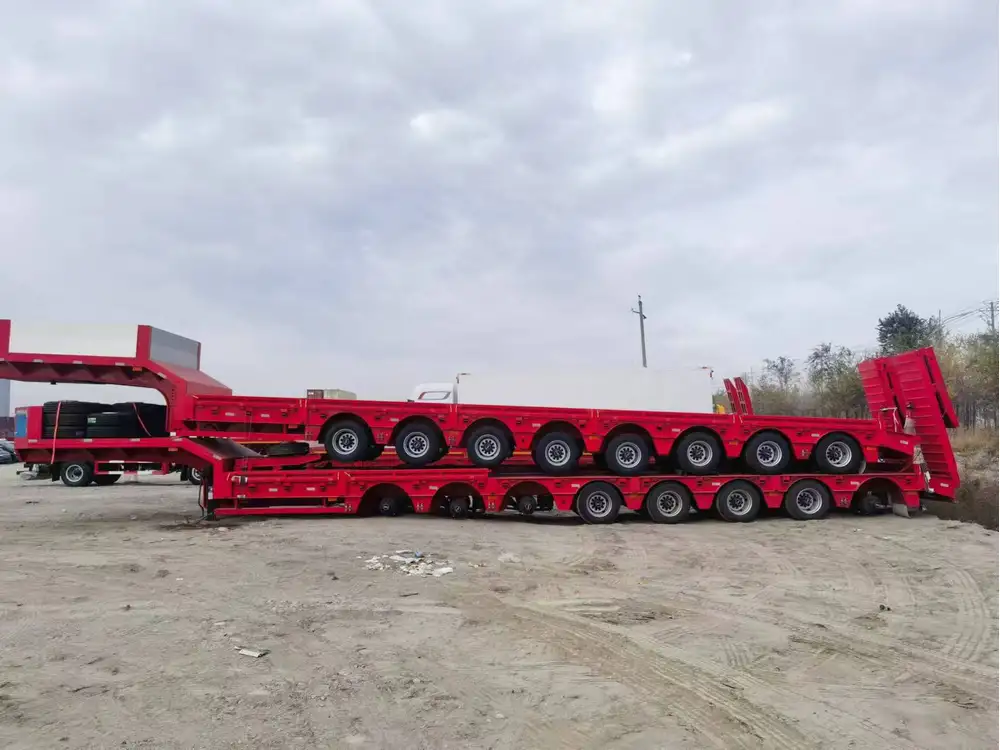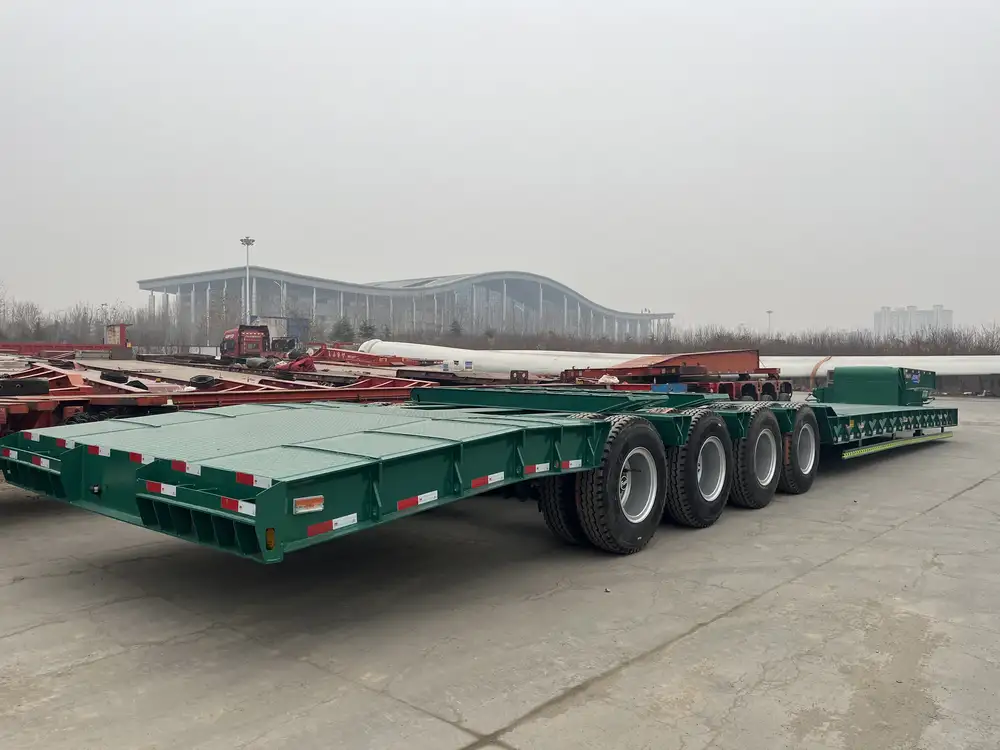Understanding the load capacity of a semi-trailer can radically influence your operations, ensuring safety, compliance, and efficiency. Transporting goods efficiently requires not just a robust vehicle, but also a clear comprehension of its capabilities. This article delves into the critical aspects of semi-trailer weight limits, factors affecting load capacity, and the implications for various industries.
Semi-Trailer Specifications: Types and Weight Limits
Understanding Semi-Trailers
Semi-trailers are a type of trailer designed for use with a truck or tractor unit. Unlike full trailers, semi-trailers have no front axle; instead, they are supported at the front by the truck’s fifth wheel hitch. This design allows for greater cargo capacity and flexibility in transport.

Common Types of Semi-Trailers
Flatbed Trailers
Ideal for transporting heavy machinery, construction materials, and large loads. They offer ease of loading and unloading, often having a capacity of 20 to 25 tonnes.Dry Van Trailers
Enclosed trailers designed to protect cargo from the elements. They typically carry goods weighing up to 26 tonnes, depending on local regulations.Reefer Trailers
Refrigerated trailers used for transporting perishable goods. Their capacity ranges typically between 20 to 22 tonnes.Tanker Trailers
Specialized semi-trailers for transporting liquids. They often have a capacity of around 30,000 liters, translating to roughly 25 to 30 tonnes, depending on the liquid’s density.
Capacity Rules and Regulations
The maximum weight a semi-trailer can carry depends on several factors, including:
Axle Configuration: The number of axles and their spacing can drastically affect the weight limit. For instance, a standard 5-axle semi-trailer can carry up to 40 tonnes gross vehicle weight (GVW) under federal regulations in the United States.
State and Local Laws: Each region may have specific regulations determining the maximum allowed weight for semi-trailers. It’s critical to consult local transportation authorities or a reputable weight limit resource.
Trailer Length and Width: The dimensions of the semi-trailer also play a role in weight capacity.
Table: Typical Weight Capacities Based on Trailer Types
| Type of Semi-Trailer | Average Capacity (Tonnes) | Description |
|---|---|---|
| Flatbed | 20 – 25 | Versatile and suitable for large, heavy items. |
| Dry Van | 20 – 26 | Enclosed, ideal for stable conditions. |
| Reefer | 20 – 22 | Temperature-controlled for perishables. |
| Tanker | 25 – 30 | For liquids, density-dependent capacity. |

Factors Affecting Semi-Trailer Load Capacity
Effective Weight Distribution
Weight distribution plays a significant role in the performance and compliance of a semi-trailer. Ideally, the weight should be evenly distributed across the axles to prevent issues such as excessive wear and potential accidents. Proper load distribution also ensures that the trailer adheres to local weight regulations.
Load Dynamics
Understanding load dynamics is essential. Factors like the center of gravity, type of cargo, and container design can dramatically influence how weight is supported and affects the movement of the semi-trailer. For example, shifting weight during transit can lead to dangerous situations like tipping.

Compliance with Safety Standards
Regulatory compliance is paramount. Each region has specific guidelines from transport authorities (e.g., DOT in the USA, Transport Canada) that govern load limits and safety checks. Violating these laws can result in hefty fines and loss of licenses.
Calculating Load Capacity: Tips and Considerations
Step-by-Step Calculation
To gauge the load capacity of a semi-trailer correctly, follow these steps:
Know Your Trailer Weight: Start by understanding the empty weight (also known as tare weight) of your semi-trailer.
Determine Gross Vehicle Weight Rating (GVWR): This is the maximum allowable weight of the vehicle including cargo, fuel, driver, and passengers. This information can typically be found on a sticker inside the cab or in the manufacturer’s specifications.
Subtract Tare Weight from GVWR: The difference gives you the maximum payload the trailer can safely carry.

Example Calculation:
- GVWR of trailer: 40 tonnes
- Tare weight: 10 tonnes
- Maximum Payload = GVWR – Tare Weight = 40 – 10 = 30 tonnes
Tools for Load Capacity Management
Utilizing technology can streamline the process of calculating and monitoring load capacities:
Weight Scales: Installation of onboard scales can provide real-time feedback on weight distribution.
Load Cells: Electronic load cells can be fitted to trailers to monitor weight dynamically.
Management Software: Software solutions can help logistics managers plan loads efficiently to maximize trailer capacity.
Common Questions: How Many Tonnes in a Semi-Trailer?

What is the Maximum Tonnage for a Standard Semi-Trailer?
Typically, a standard semi-trailer can carry up to 40 tonnes, subject to weight regulations specific to jurisdictions. Variations exist depending on trailer type and axle configurations.
Are There Different Weight Limits for Various Types of Cargo?
Yes, cargo type significantly impacts the weight limit. For instance, transporting heavy construction materials may require a flatbed trailer, while liquids would necessitate a tanker with potentially lower tonne limits due to their unique requirements.
What are the Legal Implications of Overloading a Semi-Trailer?
Overloading a trailer not only compromises safety but also places the operator at risk for fines and legal repercussions. Authorities may impose penalties, confiscate the vehicle, and incur liability in the event of an accident.

Strategies to Optimize Semi-Trailer Load Efficiency
Streamlining Load Processes
Efficient loading practices can significantly increase productivity:
Training Drivers and Handlers: Proper training in weight management techniques is crucial for optimal loading.
Scheduled Maintenance: Regular inspections can prevent issues arising from poor weight distribution or overloading.
Utilizing Technology: Advanced technologies such as GPS load tracking can aid in monitoring payloads and adjusting loads appropriately.
Innovative Load Techniques
Adopting innovative methods to distribute weight more evenly can facilitate smoother transitions over road networks, reduce fuel consumption, and enhance safety.

Environmental Considerations
The Impact of Overloading on Fuel Efficiency
Overloading a semi-trailer not only increases wear on tires and braking systems but also drastically impacts fuel efficiency. An overloaded vehicle consumes more fuel, leading to higher operational costs.
Sustainable Practices for the Transport Industry
Implementing sustainable practices can ensure that operations comply with environmental regulations while promoting efficiency. These may include:
- Utilizing lighter materials for trailers.
- Incorporating alternative fuel technologies.
- Regularly optimizing routes and loads to reduce carbon footprints.

Conclusion: Maximizing the Efficiency of Your Semi-Trailer Capacity
In conclusion, understanding how many tonnes can be carried by a semi-trailer is essential for operational success in the transport industry. From considering types of semi-trailers and regulations to implementing new technology and sustainable practices, every aspect plays a crucial role in optimizing efficiency and safety.
By being informed and strategic about load capacities, fleet managers can significantly enhance their operational outputs, minimize risks, and ensure compliance with industry regulations. Committing to effective weight management and continuous education in this ever-evolving field is the key to thriving in today’s competitive landscape.



